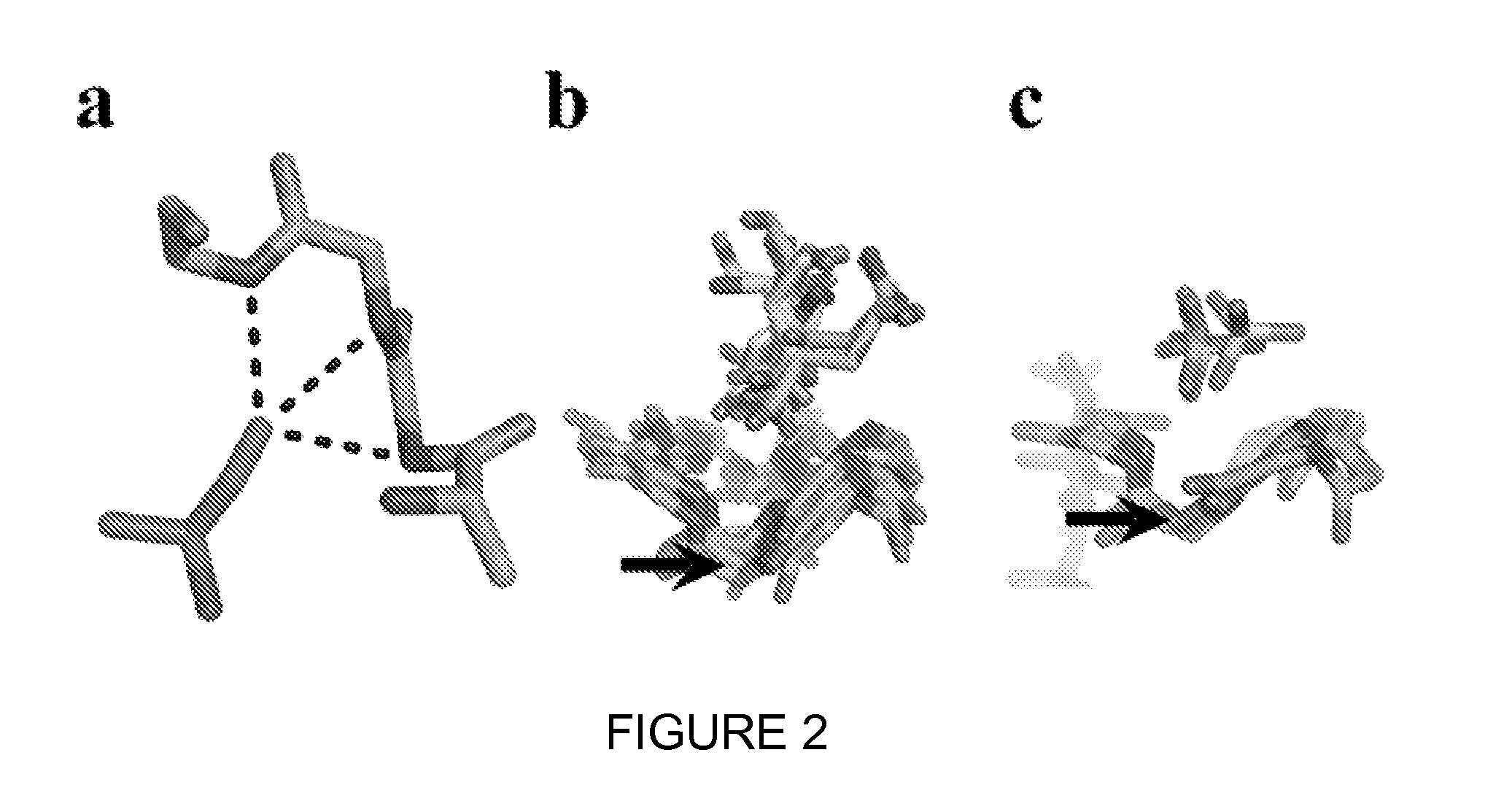Engineered antibody scaffolds
a scaffold and antibody technology, applied in the field of engineered antibody scaffolds, can solve the problems of difficult structure-guided improvements to the biophysical properties of the antibody (e.g. affinity or stability), high cost, and low throughpu
- Summary
- Abstract
- Description
- Claims
- Application Information
AI Technical Summary
Benefits of technology
Problems solved by technology
Method used
Image
Examples
example 1
Design of Phospho-Specific Antibody Scaffolds
[0139]The most common anion-binding motif within many different protein superfamilies, such as ATPases, helicases, and kinases, consists of three consecutive residues where multiple main-chain amides form hydrogen bonds with the anion (FIG. 1a) (Watson, J. D. & Milner-White, E. J. A novel main-chain anion-binding site in proteins: the nest. A particular combination of phi,psi values in successive residues gives rise to anion-binding sites that occur commonly and are found often at functionally important regions. J Mol Biol 315, 171-182 (2002)). An existing Ab scaffold into which a similar loop could be built was sought. The CDRs were manually inspected for the desired nest conformation from sixty anti-peptide Ab structures. A region of CDR H2 within a mouse Fab (PDB ID 1i8i) (Landry, R. C. et al. Antibody recognition of a conformational epitope in a peptide antigen: Fv-peptide complex of an antibody fragment specific for the mutant EGF re...
example 2
Characterization of Phospho-Specific (PS) Antibody Scaffolds
[0148]For each phosphopeptide antigen, single phage clones were isolated from each library and analyzed binding to the phosphopeptide by single-point ELISA (data not shown). For clones that gave ELISA signals >20-fold above background, the CDR H2 region was sequenced and sequences were constructed. Selections against the pSer and pThr peptides gave similar sequence logos and thus were combined into one logo. Analysis of the sequence logos from the H2- and GS-library selections against pSer / pThr highlighted the conservation of the key anchoring residue T52AH and conformation residue G54H in the loop, whereas more diversity was observed in the specificity residues (55H and 56H) (FIG. 3a). In the H2+1 libraries, a strong enrichment for a Pro-Arg insertion was observed in place of G53H and complete conservation of G54H (FIG. 3b). The G54H residue occupies a region of the Ramachandran plot in which only glycine is allowed, thus ...
example 3
Structural Analysis of Phosphopeptide Recognition
[0151]To explore the mode of phosphoresidue recognition using X-ray crystallography, four Fab:peptide complexes (sSAb:pSer, pSTAb:pSer, pSTAb:pThr, and pYAb:pTyr) and the unbound pYAb Fab were expressed, purified, and crystallized. To express the Ab scaffolds, selected Fabs were amplified by PCR from the phage display vector, cloned into pJK4, and transformed into the C43 (DE3) bacterial strain for periplasmic protein expression. Protein expression was induced with 1 mM IPTG and the culture was grown overnight (18-20 hrs) at 30° C. A high level (up to ˜50%) of proteolyzed Fabs was initially observed after expression. Similar results were observed in other bacterial strains. Recombineering was used to knockout the genes that encode for the degP and prc proteases in the isogenic strain C43 (DE3) to generate the PRO (ΔdegP Δprc Δomp7) strain. Recombineering was performed according to standard protocols (Sharan, S. K., Thomason, L. C., Ku...
PUM
 Login to View More
Login to View More Abstract
Description
Claims
Application Information
 Login to View More
Login to View More - R&D Engineer
- R&D Manager
- IP Professional
- Industry Leading Data Capabilities
- Powerful AI technology
- Patent DNA Extraction
Browse by: Latest US Patents, China's latest patents, Technical Efficacy Thesaurus, Application Domain, Technology Topic, Popular Technical Reports.
© 2024 PatSnap. All rights reserved.Legal|Privacy policy|Modern Slavery Act Transparency Statement|Sitemap|About US| Contact US: help@patsnap.com










